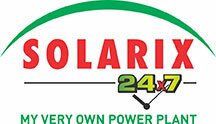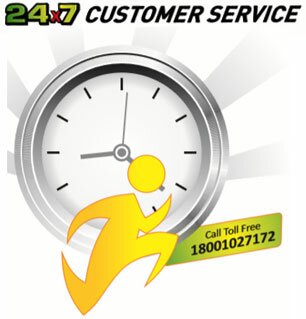
Myths/Misperceptions:
-
Q: Someone told me that the energy required to make PV panels is greater than they will every produce. True?
Ans. Glad you asked! We’ve heard this one before. Numerous studies indicate it takes 2-3 years to generate as much power as is required to manufacture photovoltaic, and the Environmental Working Group’s Green Energy Guide reports an energy return on investment for photovoltaic of 9-to-1, greater than most other electricity sources (i.e., coal: < 8:1, wind: 5:1, nuclear: <5:1, biomass: 3:1). [/pane] [pane title="Q:I hear manufacturing PV panels creates toxic by-products and waste. True?" icon="icon-ok"] Ans. Another good one, which we've also heard before. There's less documentation on this than the energy return on investment question, suggesting it's probably not an issue, but the Environmental Working Group's Green Energy Guide reports the manufacturing and operation of photovoltaics creates far less emissions than any other source of electricity analyzed. [/pane] [pane title="Q:How much does a solar electric power system cost?" icon="icon-ok"] Ans. A 2kW solar electric system will cost approximately Rs200000. That total includes the cost for all components – solar panels, panel mounts, and inverter – and labor associated with installation. [/pane] [pane title="Q:How much will I really save on my utility bills from a home electric solar power system?" icon="icon-ok"] Ans. Of course this is a relative question. It depends, in part, on how much electricity you use and how efficient the appliances are that you operate. That said expect to generate excess electricity in the summer (when days are long) which can potentially offset the energy you use from the grid in the winter. A combination of energy efficient appliances and light bulbs can help reduce your homes energy bill by over two-thirds. [/pane] [pane title="Q:.the difference between solar photovoltaic and solar hot water systems?" icon="icon-ok"] Ans. While both types of solar systems capture energy from the sun, solar photovoltaic systems use photovoltaic panels to produce electricity. Solar hot water, or thermal, systems capture sunlight to heat water for domestic use, to heat a swimming pool, or for a radiant heating system. [/pane] [pane title="Q:.What are solar hot water systems?" icon="icon-ok"] Ans. Solar hot water systems, broadly termed solar thermal systems, use the sun’s energy to heat water. Solar hot water systems can be used to heat a hot water tank or to warm a home’s radiant heating system. Swimming pools and hot tubs use a modified solar hot water system for heating water. [/pane] [pane title="Q:.How do pool heating systems work?" icon="icon-ok"] Ans. Pool heating systems use a modified solar hot water system to capture the sun’s rays to heat your pool or hot tub. [/pane] [pane title="Q:.much maintenance do solar energy panels require?" icon="icon-ok"] Ans. Solar photovoltaic panels require little maintenance – no need to wash or dust. It is, however, important to place panels where they will remain clear of shade and debris. Thus you will have to wipe them off if too much snow or leaves fall on them. Solar hot water collection arrays don’t need much attention either. It does help to periodically use a window wash brush, biodegradable soap, and water to clean the tubes. [/pane] [pane title="Q:. Can I use a financing system?" icon="icon-ok"] Ans. Yes. Consider using a home equity loan for the purchase and installation costs of a solar photovoltaic or solar hot water system to take full advantage of tax deductions. Solar energy systems are viewed as a major home energy savings upgrade and there are financial tools out there that reward you for your efforts. Remember, installing a solar energy system is comparable to any other upgrade you might do to your home, such as installing a new deck or remodeling a kitchen. [/pane] [pane title="Q:. Do I need special insurance requirements?" icon="icon-ok"] Ans.Yes. Standard homeowner’s insurance policies usually suffice to meet electric utility requirements. Electric utilities usually require that homeowners who take advantage of net metering sign an interconnection agreement. [/pane] [pane title="Q:. Will I need a building permit to install a solar energy system in my home?" icon="icon-ok"] Ans.Yes. You’ll need to obtain building permits to install a solar photovoltaic or solar hot water system. Similarly, building, electrical, and plumbing codes also apply. That said, residential solar power systems do not use “radical” building techniques and most jurisdictions have building codes that fully embrace solar energy technology. Solar professionals will roll the price for permits into their cost estimate. [/pane] [pane title="Q:.What if I’m the first person I know to install a photovoltaic system on my home?" icon="icon-ok"] Ans. First off, congratulations! Secondly, there are plenty of resources out there. If you happen to be one of the first in your area to install a solar PV system, you can work with us&local building officials to successfully install your photovoltaic system. [/pane] [pane title="Q:.When should I seek a solar professional?" icon="icon-ok"] Ans. Although solar energy systems work in parallel with conventional residential electrical and plumbing systems, there are quirks in the process well suited to seeking out professionals who specialize in solar power installation. Solar installation professionals can help you determine the type and size of system most suited for your needs. [/pane] [pane title="Q:. What should I ask a solar professional installer?" icon="icon-ok"] Ans. Solar professional installers can take the guesswork out of installing a solar power system. Whether you are considering solar photovoltaic, solar hot water, or solar heat for your pool, a solarix.in can help you determine the type and size of system that will work best and guide you through the process.
-
Q:. How can I calculate the cost and payback time from a solar power installation?
Ans. You can estimate how much a solar electric or solar hot water system may cost if you determine your current energy needs and costs and compare against your future anticipated use. Once you have a sense of how much energy you use, you can evaluate the cost of purchasing and installing one or both of the technologies.
Luckily in today’s market you can take advantage of taxation, credits, rebates and other financial incentives that create attractive and competitive prices for solar PV and hot water systems. -
Q:.How long will it take to install a solar power system in my home?
Ans.Planning, configuring, and doing any custom ordering for your solar energy system can take up to a few weeks. However, the installation process itself can typically be completed in only a few days time, in many cases even less.
-
Q:. How can solarix.in help me shop for solar?
Ans. solarix.in saves you time, money, and headaches by buying quality products. We have highly experienced solar professionals with a track record of success and satisfied customers. We encourage you to look around our site for all the information you need on solar energy installation.
When you’re ready, all you need to do to get started is tell us about your project, and you can be assured you’ll receive competitive bids. -
Q:. What components do I need to install a grid-tied solar electric system?
Ans. You will need a photovoltaic array to capture the sun’s energy, an inverter to convert
the direct current (DC) produced from the photovoltaic cells into alternating current (AC)
used by your home, and a house utility meter – called a net meter – that can record both the electricity produced from your home’s power system as well as any power you may use off the grid. These three system components are then connected through a series of wiring. The photovoltaic panels are secured to your roof with panel mounts or are installed on poles that can be adjusted for sun angle. -
Q:. What is a net meter?
Ans. Net meters look very much like other outdoor meters with one notable exception – they spin both forwards and backwards recording both the power produced and power used.
-
Q:. Do I need battery backup for my solar panels?
Ans. Probably not – a backup battery bank can add as much as 25% in cost to a residential solar PV system. It’s not necessarily more efficient either – a same sized solar array will yield about 7–10% less energy if it’s battery-tied than its grid-tied counterpart.
Though you will remain tethered to your local utilities’ grid, you will not have to worry about not generating enough power. You also gain the advantage of offsetting rising utility costs. Most solar photovoltaic experts do not recommend adding a backup battery system unless there is concern about a long utility outage or the residence is in a remote location. -
Q:. How much space do I need for a solar photovoltaic system?
Ans. In bright sunlight, a square foot of a conventional photovoltaic panel will yield 10 watts of power. That’s a helpful rule of thumb for calculating a rough estimate of how much area you might need. For example, a 1000 watt system may need 100 – 200 square feet of area, depending on the type of PV module used.
-
Q:. How many solar panels do I need for an electric solar power system?
Ans. The size of the photovoltaic system is correlated to your home’s energy-use needs, available space for a system, and overall costs for the system components and installation.
-
Q:. How much shading is too much for solar photovoltaic panels?
Ans. Unfortunately shading a photovoltaic system dramatically decreases its output. Just shading the bottom row of wafers alone amounts to an 80% reduction in efficiency. So above all, don’t shade your array!
-
Q:. Take a look at the position of your home on its lot – and particularly your roof. Ask the following questions:
Ans. 1 Is there good southern exposure? Orienting solar panels to the south maximizes the effectiveness of energy collection.
2 Is the exposure free of trees or buildings that could shade the panels or drop debris on them? Shading photovoltaic panels dramatically reduces their effectiveness.
What is the pitch of your roof? Most roofs, from flat to 60-degrees can accommodate photovoltaic panels. -
Q:.Do I need to have south facing exposure to have a solar energy system?
Ans. Although southern exposure increases the effectiveness of a residential solar power system, your home may still work for solar power without having south facing exposure. Seek advice from a professional solar designer or installer to ensure success.
-
Q:. What other factors are important to consider when installing a home solar energy system?
Ans. The location of your home and the local climate will play into where you place and how you install your solar electric or solar hot water system. Wind speeds, heavy snow loads, and salt water can all affect a solar array. Understanding how those inputs effect performance will determine the types of mounts or how the arrays are angled.
-
Q:. Is there any MNRE subsidy available for setting up solar projects under MNRE finance?
Ans.The Ministry is implementing a “Grid Connected Rooftop and Small Solar Power Plants Program” in which the solar rooftop plants from 1.0 KWp to 500 KWp capacities are set up. The Ministry has set a target for installation of 100 GW Solar Power of which 40 GW is to come from grid connected solar rooftop plants. Since the target has been set, it will not be possible to provide Central Finance Assistance (CFA) for all the 40 GW such solar rooftop plants. CFA of 15% of the benchmark cost will be provided only to following categories.
Residential: All types of residential buildings
Institutional: Schools, health institutions including medical colleges & hospitals, educational institutions (Both Public & Private), R&D instructions etc.
Government: Both Central & State Governments buildings covering all Government office, Government PSUs, all buildings owned by Government directly or by any Government owned societies, companies, corporations and organizations, all Panchayati Raj buildings.
Social sector: Community centers, welfare homes, old age homes, orphanages, common service centers, common workshops for artisans or craftsman, facilities for use of community, any other establishments for commons use etc. -
Q:. What is IREDA’s Project Financing Scheme for Solar energy sector?
Ans. IREDA promotes, develop and extends financial assistance for renewable energy and energy efficiency / conservation projects. The IREDA financial services include direct financing, equipment finance, business development finance. Loans for manufacturing facilities of energy equipment, and loans to banks financing institutions for on-ending.
IREDA also promotes and finances the delivery of energy services and equipment, implementation of Demand Side Management (DSM) and the development of Energy Service Companies (ESCOs), Loan conditions are preferential compared to commercial loans. -
Q:. Is there any Capital Subsidy Scheme for Solar Lighting and Small Capacity Solar PV systems?
Ans. Capital Subsidy scheme is available only for power plants from 1 Kwp to 500 Kwp capacities. Small power plants of capacities less than 1 Kwp are not eligible for capital subsidy.
However, Solarix solar power plants are priced to incorporate subsidy in it. Solarix Smart Solar systems are cheaper than regular inverter battery systems. The grid by pass technology in Solarix creates enough savings in electricity bill that becomes free in 5 to 6 years. The solar modules give savings for 25 years. -
Q:. How do we get bank loan to set up off-grid solar power plants?
Ans. It is easy to install Solarix. You can go on line http://solarix.in and click on 3 Easy steps to own solar power plant. In three easy steps you can own a solar power plant and if you are eligible for capital subsidy Solarix will take care of that process for you.
-
Q:. How can channel partner help to get installed solar power plant in India?
Ans. Solarix is a registered channel partner of MNRE. You can go on line http://solarix.in and apply on line to own Solarix smart solar systems.










